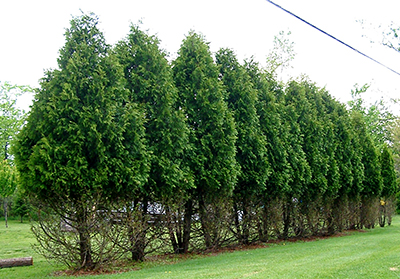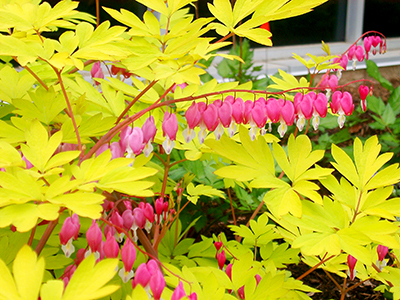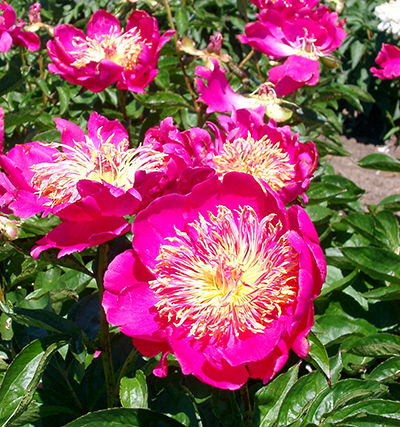Winter deer damage heavy? Seek deer-resistant plants
Evaluating “taste” preferences of deer helps gardeners choose a wise plant palette.

A picture-perfect garden never happens without trials and errors. Like anything in nature, different environmental conditions, soil types, micro-climates and exposures affect planting success or failure. Armed with a well thought-out list of plants, gardeners can address problems such as deer browse, drought or shady sites and can plan their garden to benefit pollinators or increase native plantings for habitat. This article is the start of a series on plants that are known to tolerate garden conditions that many of us struggle with in our home landscape.
“Deer feeding heavy this past winter…very heavy.” Sounds like a broken record, doesn’t it? Each passing winter, deer browse affects thousands of home landscapes. With decrease in habitat and increase in home building, deer populations eagerly push into new territory, even city neighborhoods, and eat trees, shrubs and summer and winter perennials planted by unsuspecting gardeners. Feeding especially heavily on their favorite winter plants, such as the common yew (Taxus) and arborvitae (Thuja), deer leave many home landscapes looking completely barren in early April.

Heavy deer feeding damage to a row of arborvitae.
Prevention
With one leap, deer can easily clear a 5- to 6-foot fence around a property to sample tasty delicacies throughout the season. The only thing left behind will be a few coco puffs. Tactics such as creating barriers around specific plants with fencing and burlap can be quite effective, but getting plants covered in time or the barriers put into place before the snow flies can sometimes be a challenge.
Commercial repellants are quite effective. Using taste and smell as a weapon, the sprays are a turn-off for our furry foe sporting their voracious appetite. Routine application is the key to success. Frequent spring rains will wash away products more quickly than during the winter and the early season push of new growth require repeated applications of repellants to coat the unprotected foliage. Application consistency is important since part of the tactic is affecting deer psychology, thus “re-training” feeding behavior.
Get in the game
Armed with a list of plants that deer “least prefer,” gardeners can adopt the mentality of “a strong defense is a good offence.” Because deer don’t read lists, the ratings are somewhat relative. One of the smartest tactics would be to avoid using plants that are “deer candy” and more frequently choose plants on the list deer seldom feed on.
Some general rules apply, such as plants that have distinct odors like Allium or have rough or hairy leaves as in catmint. Prickles don’t seem to be a problem for a hungry deer and during the winter, holly and roses can be their favorite plants to feed on.
In a shady environment, some of the best “picks” for deer resistance are perennials like Hellebores. Sporting glossy, semi-evergreen foliage and an early spring display of nodding blooms, these beauties will stand at the edge of woods and not be bothered. There are dozens of bloom colors to take advantage of, ranging from deep wine to sunny yellow. With names like ‘Pink Frost’ and ‘Metallic Blue Lady,’ you won’t be left wanting for excitement.
Allium are commonly used bulbs in perennial gardens to extend the season of color. Often thought of as spring bulbs, Allium scenescens ‘Millennium’ is a wonderful late-summer bloomer. Pink, 1-inch diameter spheres are born atop leaves that are flat like a daffodil. Like other Allium relatives, they have the distinctive odor of onion when brushed, making this plant fall in the “least preferred” category.
An all-out-winner for shady sites combined with deer resistance is Dicentra. While there are many types of Dicentra, the old fashioned bleeding heart is a captivating favorite for gardener’s young and old. The newest kid on the block is a cultivar known as D. ‘Gold Heart.’ This plant lights up a shady corner with bright chartreuse to gold foliage and Pepto-Bismol pink blooms. A real knockout! Deer-resistant native ferns including the ostrich fern and maidenhair fern offer a fine texture contrast in the garden.

Bleeding heart Dicentra ‘Gold Heart’ is a colorful option for avoiding deer browse.
Michigan native goatsbeard (Aruncus) is seldom fed upon by deer. When paired with a shade-loving ornamental known as Japanese forest grass (Hakonechloa ‘All Gold’), the duo will sparkle in the back of a part-shade perennial border along with a variety of ferns like the colorful Japanese painted fern.
Sunny-side up
In a sunny landscape area where yews and arborvitae are a target for deer browse, Boxwood may be a good alternative. Small, oval leaves are evergreen through the winter and although they benefit from some afternoon shelter, they are not attractive to feeding by deer. Another shrub new to the scene is commonly known as the plum yew or Cephalotaxus. Needle-like foliage appears similar to the common yew, but the plant has a somewhat cascading habit. Other shrubs that do well in this environment include Potentilla sp. and tree peonies.
Sun-loving perennials such as sedum work well in beds and borders. When paired with peonies and perennial geraniums such as G. ‘Biokovo,’ Bergennia sp. (Pig Squeak), yarrow and Japanese anemone, gardens can prevent deer browse. Don’t forget the onion family when it comes to deer resistance. Bloom times vary from spring to late summer and the display can last for weeks.

In the sun, peonies and sedum are wonderful additions and are not a favorite for deer.
When you can’t beat ‘em
Don’t give up on gardening because deer are eating you out of house and garden. Look for deer resistance in plants of every type to help re-direct their feeding behaviors back to a more native habitat. Use repellants to convince them your perennial border is not worth stopping by for a snack! Armed with a good list, you can design a winning garden that is beautiful but not so palatable.
The Kent County MSU Extension Grand Ideas Garden will host their annual plant sale featuring plants that solve problems on June 5-6 to support garden education in west Michigan. Join the expert team of Michigan State University Extension Master Gardeners who will help you navigate through the choices Friday, June 5 from 5-8 p.m. and again Saturday, June 6 from 9 a.m. to 1 p.m.
For more information on plants that are known to tolerate garden conditions that many of us struggle with in our home landscape, see the following articles from this series:



 Print
Print Email
Email

